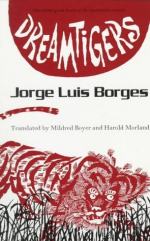|
This section contains 3,012 words (approx. 11 pages at 300 words per page) |

|
SOURCE: “Borges, De Quincey and the Interpretation of Words,” in Romance Quarterly, Vol. 39, No. 4, November, 1992, pp. 481-87.
In the following essay, Stevens examines Borges's debt to De Quincey.
In his piece on De Quincey in his Introducción a la literatura inglesa, Borges compares De Quincey to Sir Thomas Browne,1 and in the epigraph to his collection “Evaristo Carriego,” he quotes from De Quincey “… a mode of truth, not of truth coherent and central, but angular and splintered.”2 These words could apply equally well to Browne or Borges. Both use an “angular and splintered” mode of truth with which to express themselves. Borges utilizes allusions to Browne and to other authors, such as De Quincey, to explore the theme of the conflicting interpretations of words.3
Ronald Christ, in The Narrow Act, points to the vast influence De Quincey had on Borges, and the many references to him in...
|
This section contains 3,012 words (approx. 11 pages at 300 words per page) |

|


